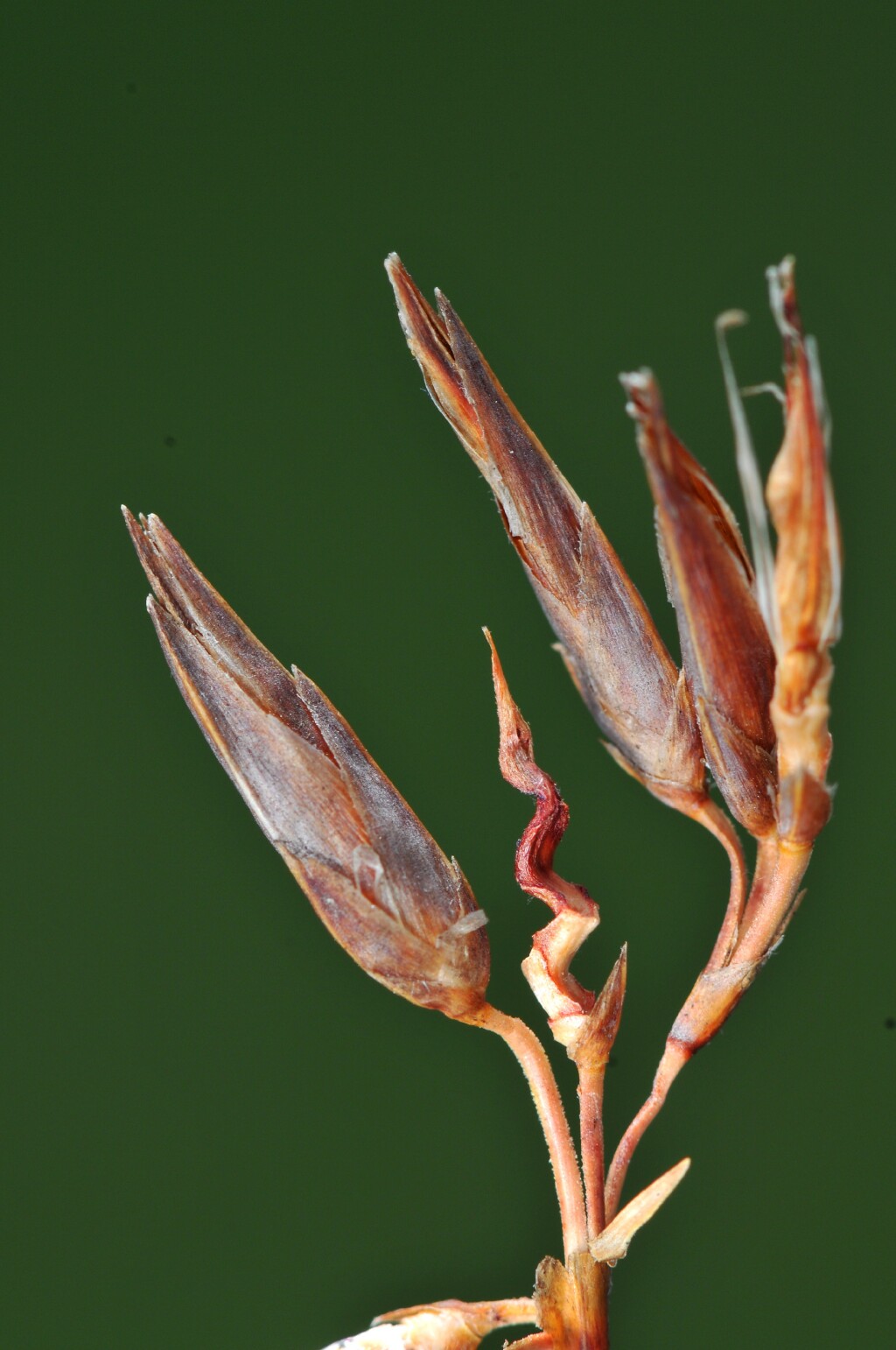Schoenus
Perennials or annuals, rhizomatous or tufted. Culms 0-several-noded, erect or rarely prostrate and rooting at the nodes, terete or trigonous. Leaves basal and/or cauline, linear, flat or channelled, sometimes reduced to mucronate sheaths; mouth of leaf-sheath often hairy, with or without a ligule. Inflorescence panicle-like, with nodes often widely separated (with spikelets clustered or solitary), or head-like, or reduced to a single spikelet; lowest involucral bract leaf-like. Spikelets ± compressed, usually few-flowered, sessile to long-pedicellate. Rachilla straight and with very short internodes in the lower part (between the empty glumes), but the upper internodes (between fertile glumes) elongated and prominently zigzag. Glumes distichous, the lowest ones empty, the uppermost often strongly reduced and empty. Flowers usually bisexual (uppermost often male), attached at the internal angles of the rachilla. Hypogynous bristles up to 6, filiform or scale-like, ciliate to plumose or antrorsely scabrous, or absent. Stamens (1–)3(–6). Style 2- or 3-fid, continuous with ovary, deciduous. Nut sessile or shortly stipitate, trigonous, mostly obliquely shaped, occasionally minutely hispid near apex.
About 100 species, mainly South-east Asia and Australia, but also New Zealand, New Caledonia, Micronesia, Europe and North and South America; about 90 species in Australia, occurring in all States.
Schoenus moorei Benth. is known to occur within a few km of the Victorian border at Nadgee in the extreme south-east of NSW and could be expected to be found in far eastern Victoria. This tufted perennial to c. 20 cm high somewhat resembles the common S. tesquorum and S. apogon, but is a coarser plant, with sheaths yellow-brown and persisting on older plants after the (usually curly) blades have fallen. The distinctive, trigonous, obpyriform to obovoid nut is transversely wrinkled and hairy, glistening, pale to dark brown, 1.0–1.8 mm long.
Wilson, K.L. (1994). Cyperaceae. In: Walsh, N.G.; Entwisle, T.J., Flora of Victoria Vol. 2, Ferns and Allied Plants, Conifers and Monocotyledons, pp. 238–356. Inkata Press, Melbourne.
 Spinning
Spinning


